Introduction
In today's rapidly evolving business landscape, efficient product development is key to staying competitive. MVP (Minimum Viable Product) as a Service offers an innovative approach that allows businesses to launch products quickly and effectively, utilizing minimal resources while maximizing feedback and adaptability. This strategy focuses on delivering essential features that address core user needs, enabling swift iterations based on real user data.
By leveraging MVP as a Service, companies can validate their ideas, reduce risks, and make informed decisions about the product's future, significantly enhancing their market responsiveness and scalability. This article explores the critical benefits of MVP development, including cost savings, faster time-to-market, user-centered development, market validation, and enhanced user experience, supported by real-world success stories from industry leaders.
Key Benefits of MVP Development
MVP (Minimum Viable Product) as a Service offers a streamlined method for businesses to introduce their offerings efficiently, utilizing minimal resources while maximizing feedback and adaptability. This model empowers companies to concentrate on essential features that address core user needs, enabling faster iterations based on real user data. Eric Ries, in his book 'The Lean Startup,' defined an MVP as the version of a new offering that allows a team to collect the maximum amount of validated learning about customers with the least effort. This approach was notably successful for companies like Airbnb, who needed to validate their novel service concept quickly.
By leveraging MVP as a Service, businesses can swiftly validate their ideas, reduce risks, and make informed decisions about the future of their offerings. Regardless of the typical obstacles that business founders encounter, including uncertainty in the MVP development phase and the anxiety of producing an undesirable offering, concentrating on key attributes and genuine feedback from consumers is crucial. It takes only 3 to 4 months to build an MVP, but 90% of entrepreneurs face confusion, which consumes more time. This iterative method not only reduces risks but also guarantees that the development is in harmony with real consumer demands, tackling the essential issue your users face and how you plan to resolve it. This customer-centric mindset is crucial for the success and scalability of the MVP.
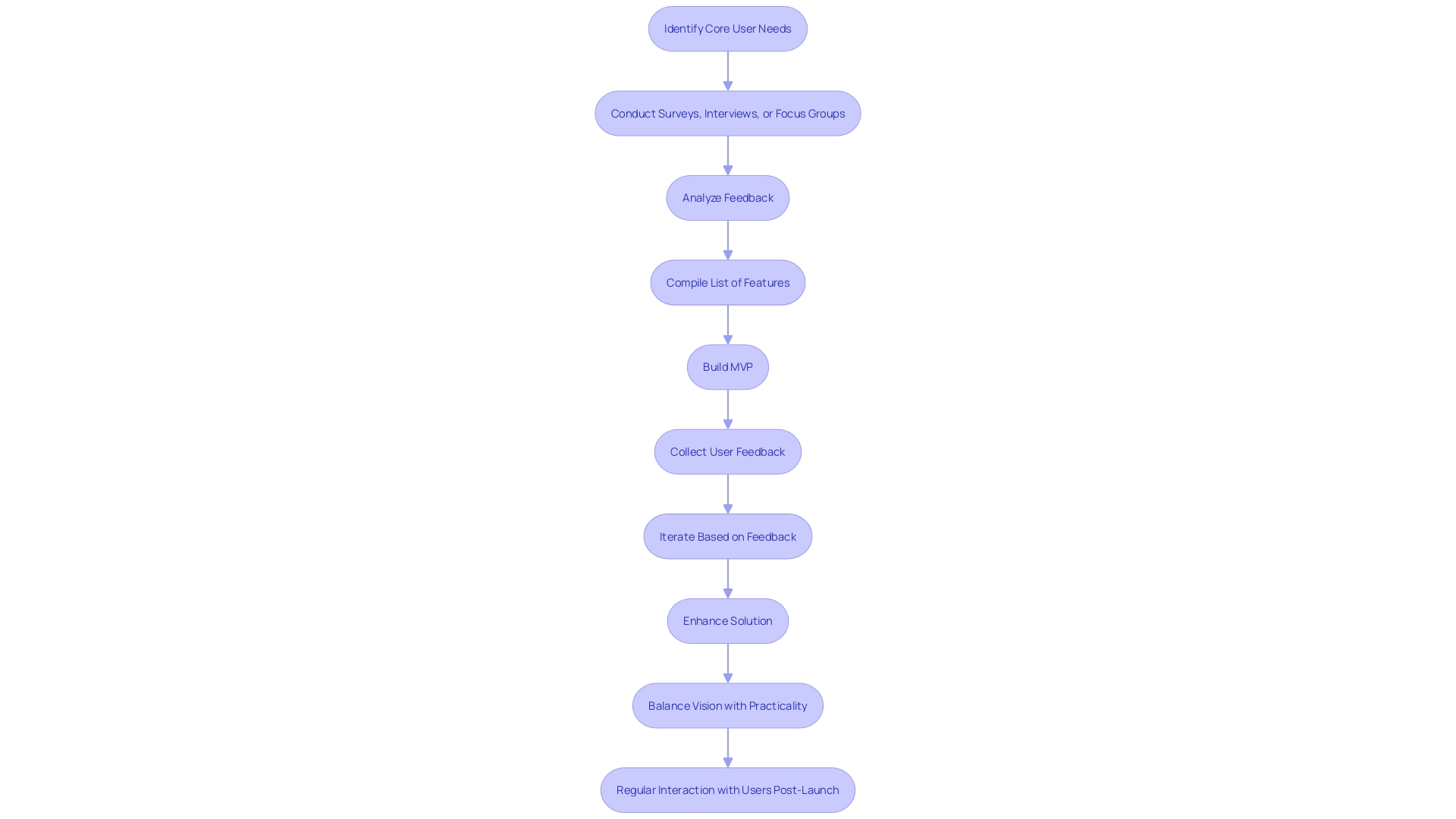
Cost Savings and Resource Efficiency
One of the primary advantages of using MVP as a Service is its potential for significant cost savings. By creating an MVP, companies can bypass the significant initial expenses linked with complete development. This service model allows companies to allocate resources more efficiently, focusing on essential features that provide the most value. For instance, BigBasket leveraged Amazon SageMaker to train their computer vision model, reducing training time by approximately 50% and saving costs by 20%. Furthermore, by evaluating the demand with a minimal viable offering, companies can prevent expensive errors that may occur from investing in a service that does not satisfy consumer requirements. It typically takes only 3 to 4 months to build an MVP, allowing companies to quickly gather user feedback and make necessary adjustments. This iterative method greatly lowers the chance of failure, as 42% of new SaaS offerings fail due to an absence of demand. Consequently, MVP as a Service not only reduces expenses but also offers a strategic benefit by allowing swift validation and flexibility.
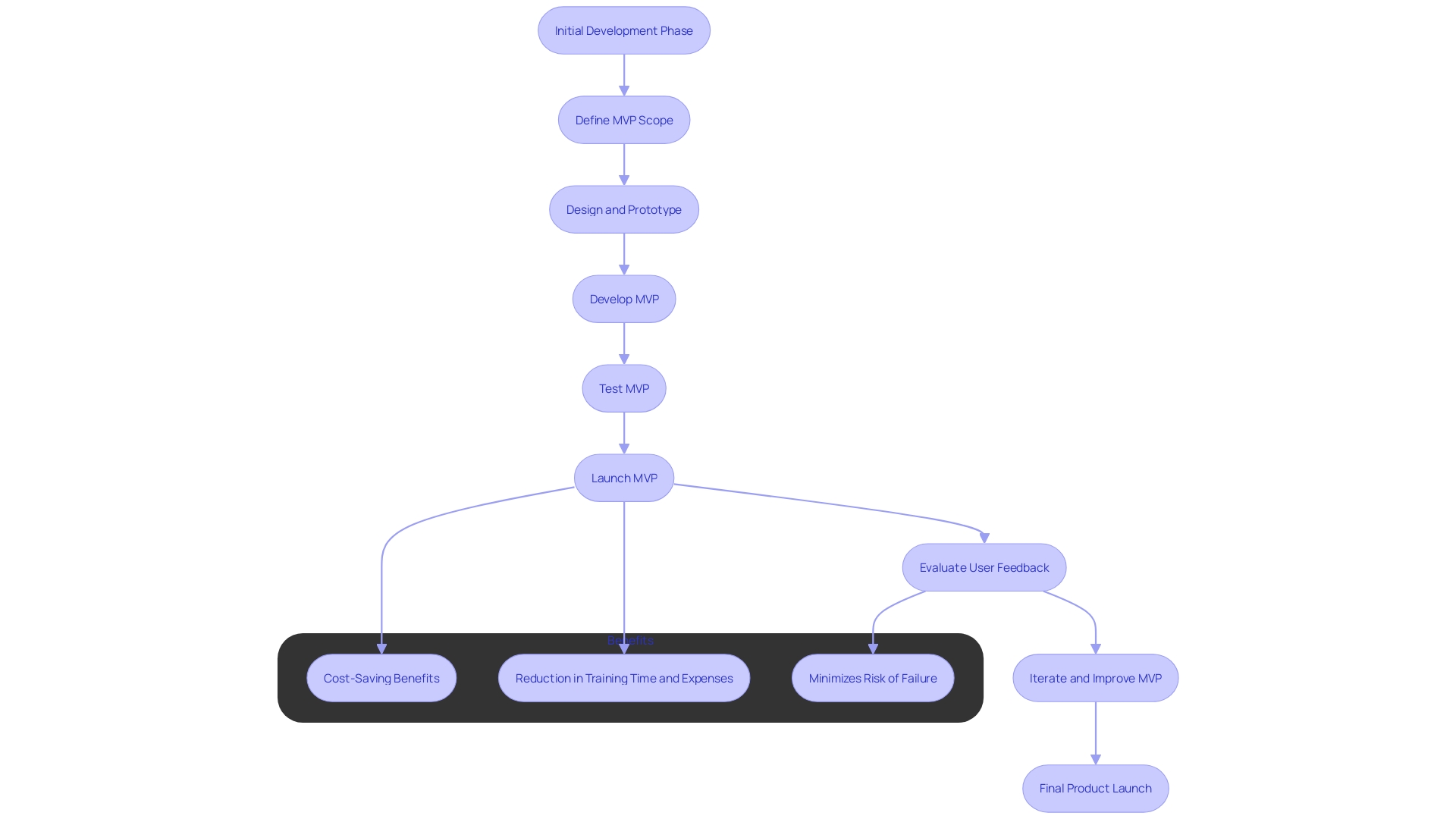
Faster Time-to-Market
MVP as a Service speeds up the product development process, allowing businesses to introduce their offerings to consumers much faster. Typically, constructing an MVP takes only 3 to 4 months, significantly reducing the time compared to developing a complete solution. This accelerated method enables businesses to concentrate on essential functionalities, thus aiding in early entry and seizing initial share. Furthermore, launching an MVP assists in collecting prompt feedback from individuals, which can subsequently be integrated into later iterations for ongoing enhancement. This repetitive procedure not only reduces the chance of creating an offering that fails to gain attention but also guarantees that the offering develops in accordance with consumer requirements and industry trends. By prioritizing speed and agility, businesses can establish a competitive edge and position themselves as market leaders in rapidly evolving industries.
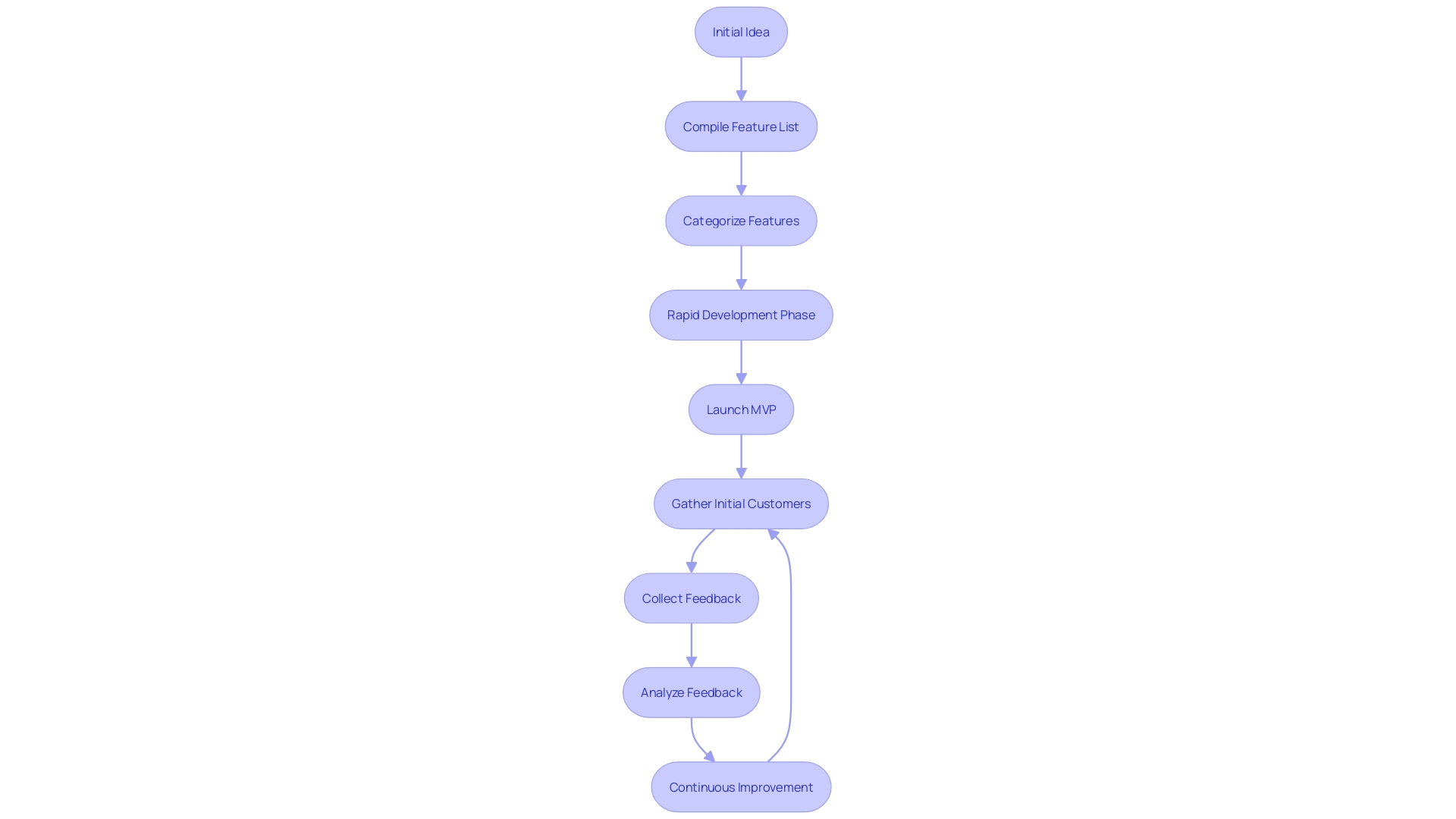
User-Centered Development and Feedback
A fundamental component of MVP as a Service is its focus on user-centered development. By actively interacting with early adopters and collecting thorough feedback through surveys, interviews, and social media engagement, businesses can refine their offerings based on real experiences and preferences. This iterative approach is exemplified by the Kano model, which prioritizes features based on their impact on user satisfaction versus the effort required to build them. Dr. Noriaki Kano's research demonstrated that not all features equally affect customer satisfaction, guiding companies to focus their resources on the most impactful elements.
Furthermore, the practice of evaluating a minimal viable offering in one area aids in developing a devoted clientele and offers essential knowledge that can guide enhancements. This approach guarantees a closer connection between the offering and consumer needs, resulting in improved client satisfaction and loyalty. Statistics emphasize the urgency of this approach, with 62% of participants noting a heightened demand for research involving individuals in the past year, underscoring the significance of placing insights from individuals at the core of development decisions.
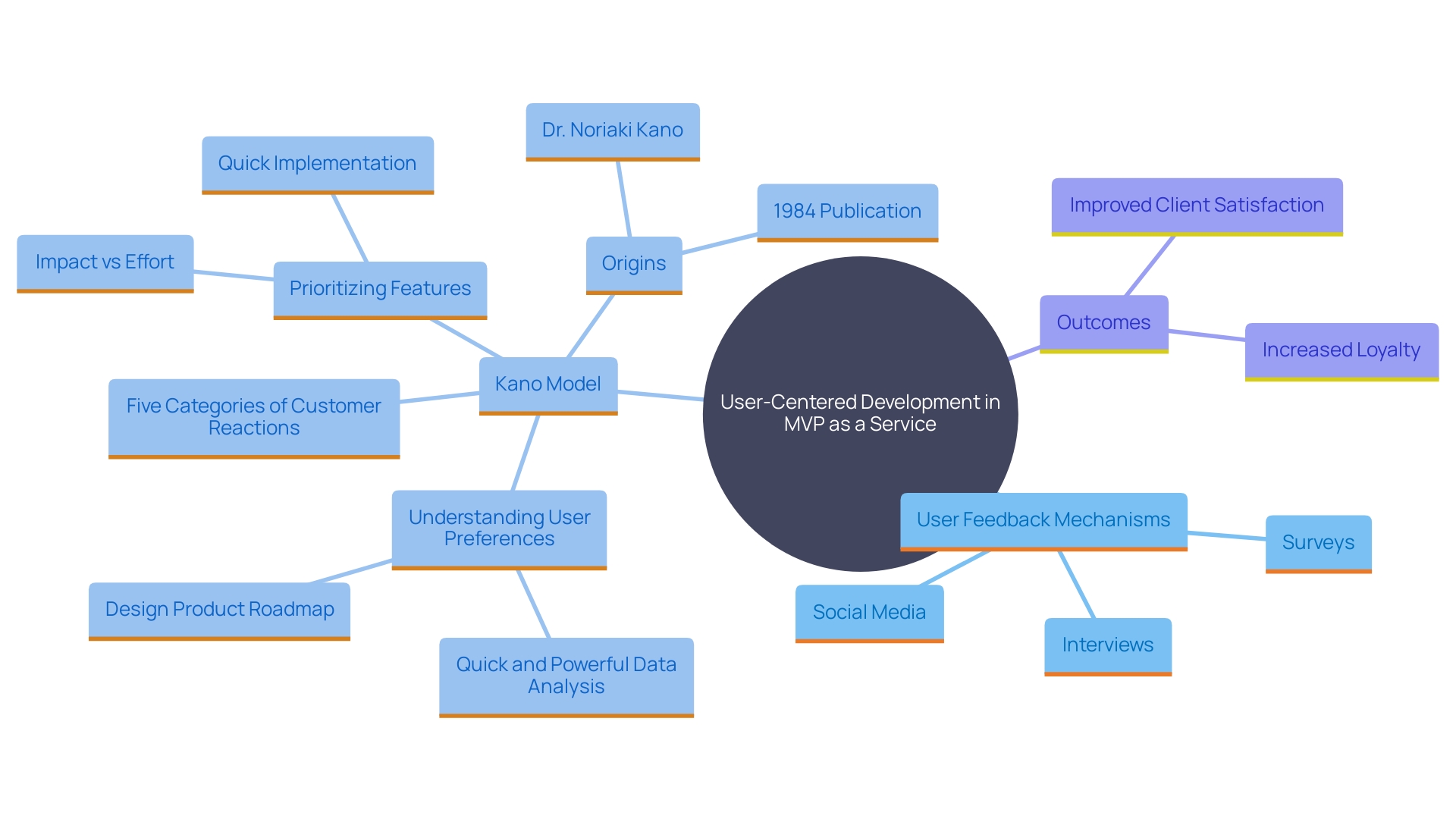
Market Validation and Risk Mitigation
Launching an MVP swiftly introduces a solution to consumers with minimal features, enabling startups to confirm their assumptions and hypotheses effectively. This process helps identify potential challenges and opportunities before committing to full-scale development. According to industry statistics, it takes only 3 to 4 months to build an MVP, yet 90% of entrepreneurs often get confused during this phase, consuming more time than necessary.
Initial assessments via a minimum viable product allow companies to confirm or disprove beliefs regarding their intended audience, preferences of individuals, and problem-solution alignment based on actual behaviors and responses. This iterative method assists in making data-driven choices, minimizing the risk of developing something that users may find unappealing—a common concern for many entrepreneurs.
'Furthermore, testing in a single area provides valuable insights that can guide enhancements and future expansions in the business. As one expert noted, 'This allows you to gain traction in a smaller market before expanding to a broader audience. Further, it helps in building a strong foundation and loyal customer base, which can be crucial for scaling your MVP successfully.'
Working with nearly 100 startups, it’s been observed that those who understood the MVP process well could navigate these challenges effectively. 'Real-world feedback from early adopters ensures that resources are invested in a direction that aligns with user needs, driving the offering toward success and mitigating risks along the way.'.
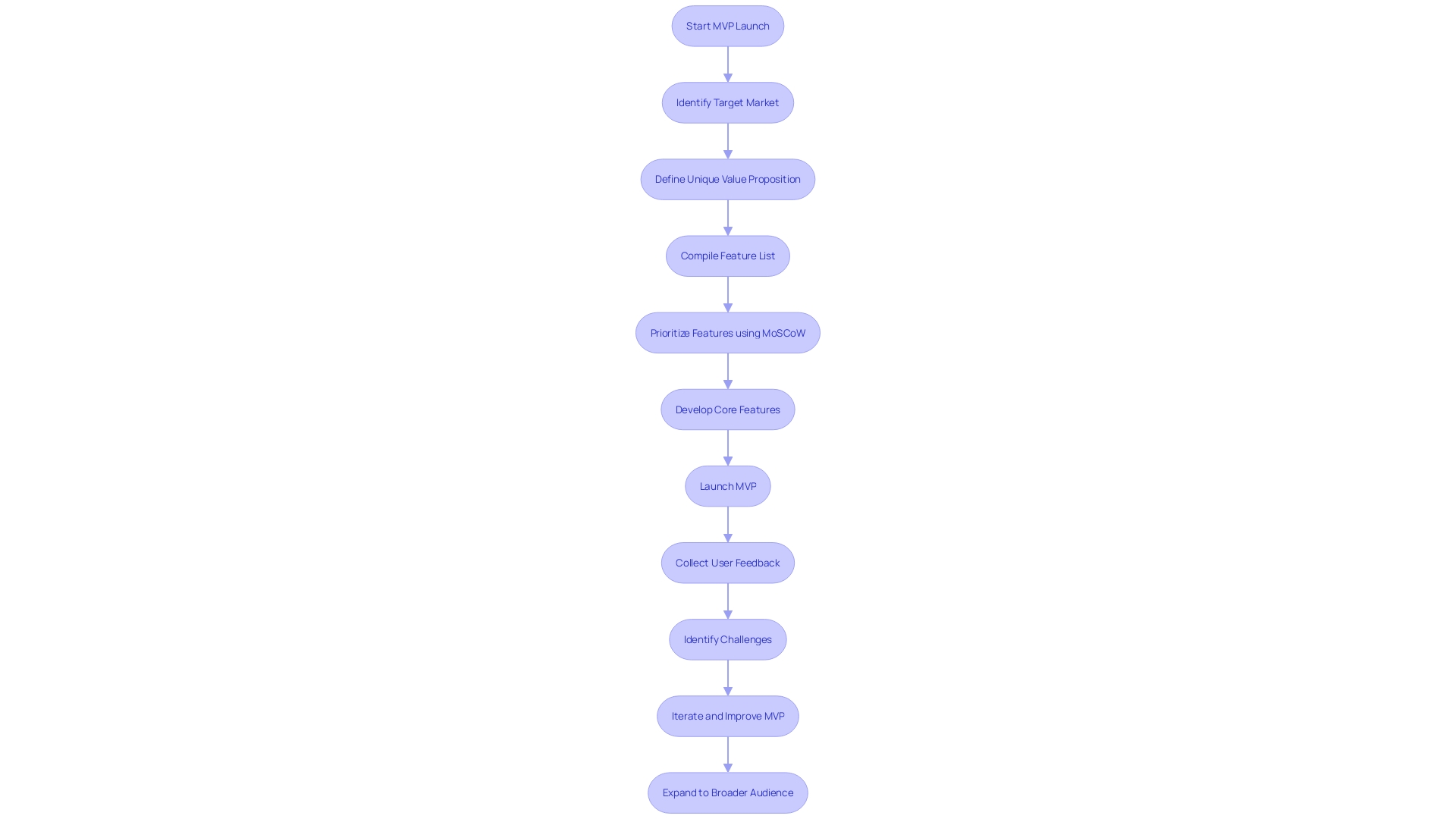
Scalability and Flexibility
MVP as a Service provides the scalability and flexibility required for companies to adjust their offerings as they develop. By introducing an offering with essential characteristics, companies can collect immediate customer input and determine how effectively their item fulfills industry demands. This feedback loop enables businesses to prioritize feature improvements or make adjustments that align with their changing industry demands. As seen in successful case studies, companies that utilized MVP to test their product concept were able to scale effectively after validating their product.
It generally requires just 3 to 4 months to create a minimum viable product, making it a time-efficient approach for examination. Despite widespread worries among entrepreneurs about developing a less attractive MVP, the procedure of testing and refining based on feedback from individuals helps reduce this risk. As noted by Roy Robinson, CPO at Mention Me, leveraging unique advocacy insights from a loyal customer base can drive significant revenue growth. This flexibility is essential in today's fast-moving digital landscape where consumer expectations and industry conditions can shift swiftly. Establishing a solid foundation and devoted customer base through MVP testing can offer valuable insights for future growth opportunities, ensuring long-term success.
Enhanced User Experience and Competitive Advantage
By concentrating on essential features and integrating feedback from individuals, MVP as a Service significantly improves the creation of a superior experience. This method enables companies to confirm their concepts and refine rapidly based on actual participant interactions, ensuring that the product fulfills consumer requirements and distinguishes itself in the industry. As Dunelm's use of a micro frontends architecture demonstrates, adopting innovative technologies can streamline development processes and improve customer satisfaction. Additionally, the power of customer advocacy marketing, as highlighted by Mention Me, shows that a well-designed MVP can build a strong, loyal customer base, making it a key differentiator in crowded markets. This competitive advantage is essential for attracting and keeping customers, as shown by the fact that 84% of shoppers would cease purchasing from a retailer after one negative delivery experience. Therefore, an MVP not only establishes a brand's reputation for responsiveness and innovation but also plays a vital role in maintaining customer loyalty and driving long-term growth.
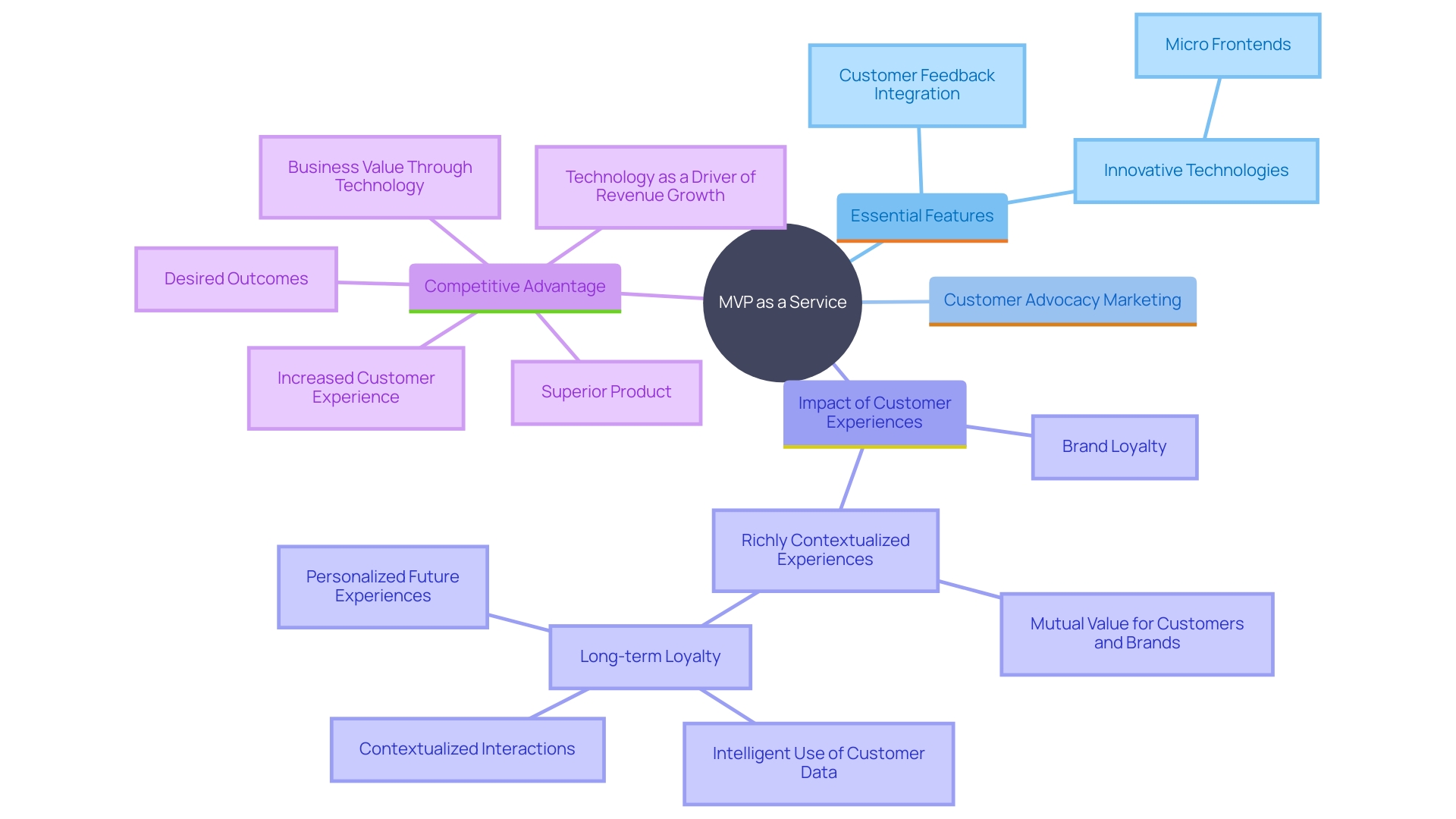
Applications and Success Stories of MVP Development
Numerous companies across various industries have successfully utilized MVP as a Service to launch their offerings. Tech startups frequently employ this strategy to test their concepts with minimal investment, allowing them to iterate and pivot based on valuable user feedback. This method is essential considering that 42% of new SaaS offerings fail due to insufficient demand. By validating their problem and ensuring a strong value proposition, startups significantly increase their chances of success.
Established companies also turn to MVPs to explore new market segments or product lines, ensuring they stay competitive and relevant. For instance, some enterprises analyze industry trends, competitor offerings, and emerging technologies to identify unmet needs and untapped opportunities, thereby leveraging MVPs to address these gaps effectively.
The process of creating an MVP is relatively quick, typically taking only 3 to 4 months. However, 90% of entrepreneurs find themselves confused during this phase, often leading to delays. Despite these challenges, many have found success by concentrating on creating a visually appealing MVP that captures the attention of individuals from the outset. Research suggests that users form an opinion about a website or app within the first 50 milliseconds, underscoring the importance of aesthetics in the initial engagement.
In real-world applications, we have seen nearly 100 startups navigate the MVP development process. While some were clear about their objectives, others struggled to find the right approach. Nevertheless, those who succeeded laid a strong foundation for their products, gathering crucial insights and feedback that informed subsequent improvements and market expansions.
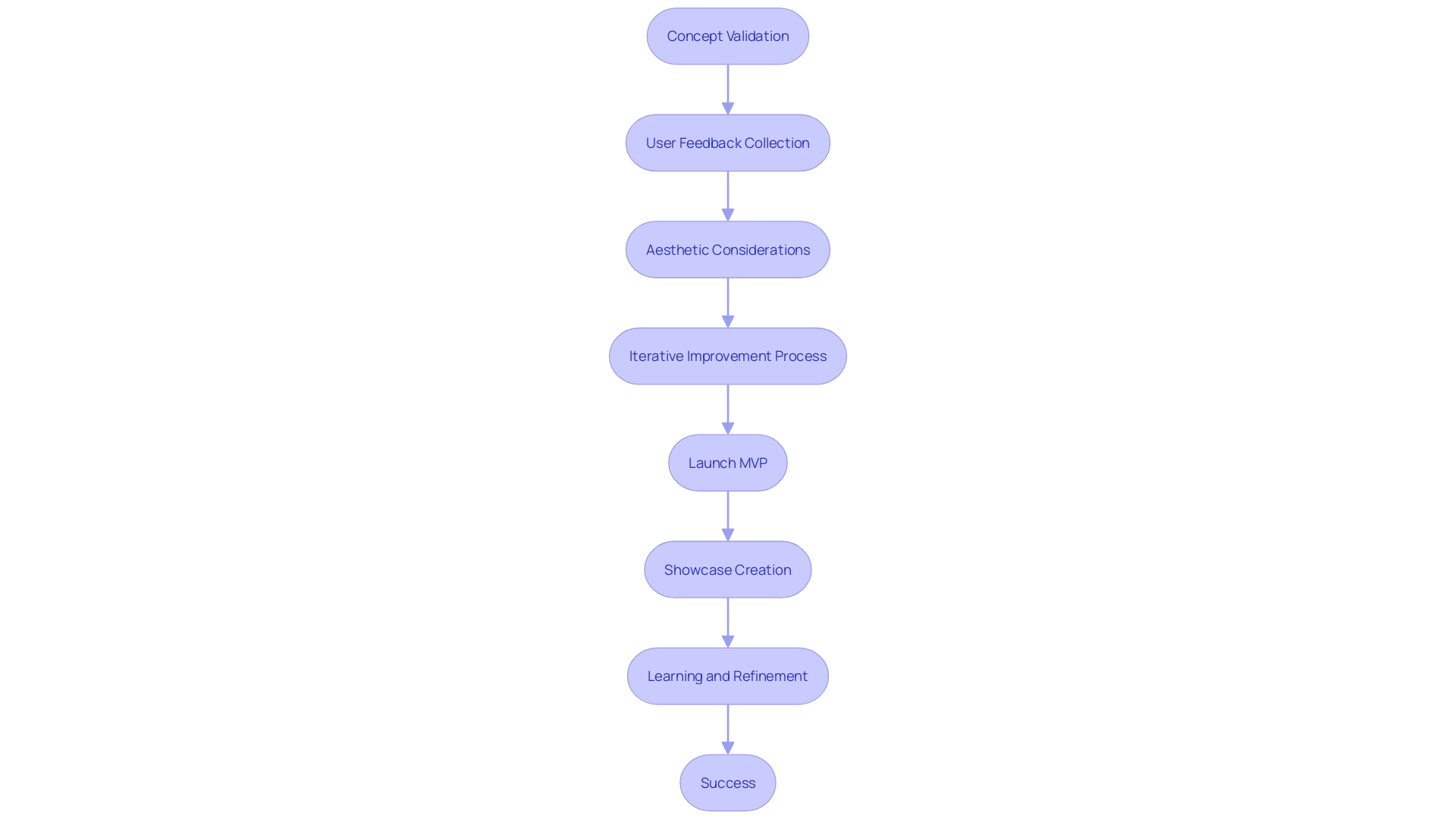
Conclusion
The exploration of MVP as a Service highlights its critical role in modern product development, emphasizing the importance of efficiency and user-centered design. By focusing on essential features and real user feedback, businesses can streamline their processes, mitigate risks, and enhance their market responsiveness. The real-world success stories demonstrate that this approach not only fosters innovation but also ensures that products align closely with user needs.
Cost savings and faster time-to-market are significant advantages of adopting the MVP model. Companies can avoid the pitfalls of over-investing in untested ideas, allowing them to allocate resources more effectively. This iterative process of gathering user insights and making adjustments fosters a culture of adaptability and continuous improvement, crucial for navigating today’s dynamic market landscape.
Moreover, the emphasis on market validation and user engagement underscores the necessity of a customer-centric approach in product development. By leveraging feedback and focusing on user satisfaction, businesses can build strong, loyal customer bases that drive long-term growth. The scalability and flexibility offered by MVP as a Service empower companies to pivot and evolve in response to changing market demands, solidifying their competitive advantage.
In conclusion, embracing MVP as a Service is not merely a strategic choice but a fundamental shift in how businesses approach product development. By prioritizing efficiency, user engagement, and adaptability, companies can position themselves for success in an increasingly competitive environment.





